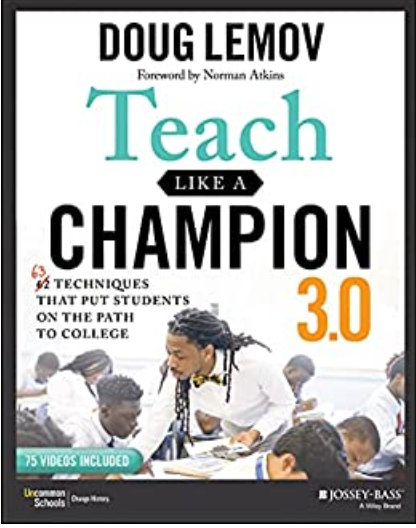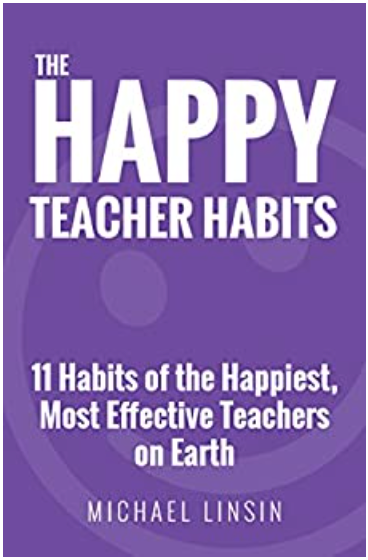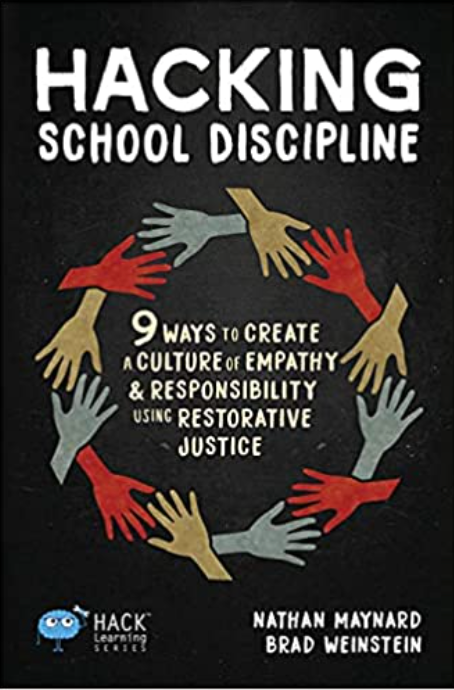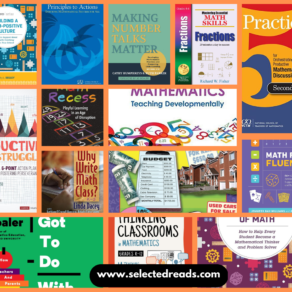Classroom management is a subject near and dear to many educators, myself included. It’s an intricate and vital aspect of teaching that encompasses not only the practical logistics but also the emotional climate of a classroom. Recognizing its profound impact on both teaching and learning, I’ve embarked on a series of posts to delve into this multifaceted concept, including exploring classroom management apps and providing a classroom management annotated bibliography.
Through my 15 years of teaching and my work as an educational researcher, I’ve come to appreciate the complex interplay of strategies and attitudes that make for successful classroom management. Each classroom is a unique ecosystem, and understanding how to navigate it effectively is a skill that’s both art and science. In this post, I’ve gathered seminal classroom management books that explore various facets of classroom management which I believe will add value to your pedagogical practice.
Whether you’re a seasoned educator looking to refine your approach or you’re just starting your teaching journey, I invite you to join me in exploring these thought-provoking classroom management books.
For teachers who have just started their teaching journey, check out our list of the best books for new teachers.
What is Classroom Management?
Classroom management is the practice of developing and sustaining an orderly, productive learning environment. It covers a wide variety of strategies, from setting expectations and implementing effective lesson plans to teaching specific skills and fostering positive relationships between students and teachers. Creating a successful educational environment through effective classroom management strategies can help students learn and grow.
Classroom Management Books
Here are some of our favourite classroom management books:
1.Classroom Management for Middle and High School Teachers, by Edmund T. Emmer, Carolyn M. Evertson
Classroom Management for Middle and High School Teachers provides teachers with the skills, approaches, and strategies necessary to establish effective learning environments in elementary school classrooms.
Based on experience in more than 500 classrooms, the authors provide details on how to plan, develop, and implement a classroom management system that helps create a classroom environment that focuses on and facilitates learning.
Examples, checklists, case study vignettes, and group activities illustrate key concepts and make the content concrete, allowing readers to reflect on and apply the content to real-life settings.
2. These Kids Are Out of Control, by IV Milner, et al
“These Kids Are Out of Control” provides teachers and administrators with the insight they need to better serve the needs of their students. Written by experts in the field, the book details the specific practices, tools, beliefs, dispositions, and mindsets that are essential to better serve the complex needs of our diverse learners.
Topics covered in the book include being culturally responsive in today’s classroom environments, understanding the curriculum, building relationships in and outside of school, and assessing student development and learning.
3. Troublemakers: Lessons in Freedom from Young Children at School, by Carla Shalaby
In Troublemakers: Lessons in Freedom from Young Children at School, Carla Shalaby, a former elementary school teacher, explores the everyday lives of four young “troublemakers.” These children challenge the ways we identify and understand so-called problem children.
Time and again, we make seemingly endless efforts to moderate, punish, and even medicate our children when we should instead be concerned with transforming the very nature of our institutions, systems, and structures, large and small.
Through delicately crafted portraits of these memorable children—Zora, Lucas, Sean, and Marcus—Troublemakers allows us to see school through the eyes of those who know firsthand what it means to be labelled a problem.
4. Teach Like a Champion 3.0, by Doug Lemov
Updated with the latest techniques and findings in cognitive science, this guide by Doug Lemov is indispensable for anyone looking to create a positive and productive learning environment. Whether you’re a new teacher or an experienced educator, you’ll find valuable tips on how to encourage student engagement, accountability, and excellence.
Teach Like a Champion 3.0 also includes an expanded video collection that will help you see the techniques in action and put them into practice in your own classroom. With this book, you’ll be able to build students’ background knowledge, move learning into long-term memory, and connect your teaching with the standards-aligned curriculum for tangible results.
5. I Notice: A Step-by-Step Guide to Transform Student Potential Through Building Intentional Relationships, by Claire E. Hallinan
This step-by-step guide provides a revolutionary new approach to building intentional relationships with your students. Using six simple steps, you can define unique categories of relationships, self-awareness, and strategies to make connections. This will help foster your children’s achievement and confidence.
Claire E. Hallinan, an elementary classroom teacher and author of the bestselling Gift of Gratitude, offers a unique perspective on building relationships with your students. She explains how to use the “I notice” statement to become a more mindful observer and mentor without harsh judgment on children. With this approach, you can help your students reach their goals and become successful individuals.
6. What Great Teachers Do Differently: Nineteen Things That Matter Most, by Todd Whitaker
In What Great Teachers Do Differently, Todd Whitaker lays out the beliefs and behaviors that set great teachers apart. He discusses why it’s important to focus on relationships, how to create a consistent and engaging learning environment, and how to choose the right mode of communication with your students.
This essential third edition also features new sections on why it’s about more than relationships, how to focus on a consistent, engaging learning environment, and the importance of choosing the right mode—business, parent, child—to improve your classroom management.
7. The Happy Teacher Habits, by Michael Linsin
Based on the latest research, and drawing on experts from the worlds of business, marketing, sports, entertainment, music, and medicine, you will learn simple, actionable strategies that will eliminate your teaching stress, supercharge your ability to motivate and inspire your students, and empower you to really love your job.
The Happy Teacher Habits exposes the falsehoods and misinformation teachers are bombarded with every day and provides you with the habits of the happiest, most effective teachers on Earth. You will learn how to ditch the teacher burnout syndrome, how to create a love of learning in your students, and how to find fulfilment in your career.
8.Better Than Carrots or Sticks, by Dominique Smith, Douglas Fisher, Nancy Frey
In Better Than Carrots or Sticks, Dominique Smith, Douglas Fisher and Nancy Frey provide a practical blueprint for creating a cooperative and respectful classroom climate in which students and teachers work through behavioural issues together.
After a comprehensive overview of the roots of the restorative practices movement in schools, the authors explain how to establish procedures and expectations for student behaviour that encourage the development of positive interpersonal skills; develop a non confrontational rapport with even the most challenging students; and implement conflict resolution strategies that prioritize relationship building and mutual understanding over finger-pointing and retribution.
9. The Classroom Management Secret, by Michael Linsin
Based on the hugely popular blog Smart Classroom Management, this book provides step-by-step advice on how to create a well-behaved and disciplined classroom. What makes this book different is the little-known secret shared by the most successful teachers – those who are remembered and loved for a lifetime. This secret will help you to build rapport with your students, manage behaviour effectively, and teach with joy and passion.
10. Management in the Active Classroom, by Ron Berger, Dina Strasser, Libby Woodfin
In Management in the Active Classroom, Ron Berger and Dina Strasser offer a comprehensive guide for creating a well-managed classroom. With strategies that have been successfully tested in classrooms across the United States, this book provides concrete steps and examples that will equip teachers of all levels of experience to establish a collaborative, active learning environment.
The authors emphasize the importance of creating a classroom culture where students feel safe and respected, and they provide techniques for managing everything from student behaviour to transitions between activities. Accompanying videos help to bring the concepts in the book to life, and teachers can visit the companion website for additional resources.
11. The Total Classroom Management Makeover: in 18 short, simple lessons, by Michael Linsin
The Total Classroom Management Makeover is designed to help educators create an effective learning environment. The 18 lessons are written in a concise and accessible way, and together they form an innovative approach to teaching and managing behavior. This approach is specifically designed to create intrinsic desire in students to listen, learn, and behave. As a result, educators can expect a well-behaved class with improved behavior.
12. Take Control of the Noisy Class: Chaos to Calm in 15 Seconds, by Rob Plevin
In Take Control of the Noisy Class, teacher-trainer Rob Plevin shares a proven, step-by-step plan for successfully managing the most challenging individuals and groups in today’s toughest classrooms. Drawing on over 20 years of experience working in special education and mainstream settings with students of all ages, Plevin offers fast-acting techniques that help teachers connect and succeed with hard-to-reach, reluctant learners.
13. Hacking School Discipline, by Nathan Maynard, Brad Weinstein
In “Hacking School Discipline” by Nathan Maynard and Brad Weinstein, the authors offer a transformative approach to managing classroom behavior. They emphasize the importance of moving away from traditional punitive measures and instead focusing on understanding and addressing the root causes of negative behaviors.
Through strategies that foster self-regulation, empathy, and collaboration, they present a model for building a supportive classroom environment. Utilizing restorative circles to reflect on behavior and promote dialogue, the book serves as a practical guide for educators seeking to enhance communication and create meaningful, impactful change in their students’ lives.
14. Handbook of Classroom Management, by Edward J. Sabornie (Editor), Dorothy L. Espelage (Editor)
The “Handbook of Classroom Management” in its third edition stands as a definitive compilation of the latest research and development in the field of classroom management. This volume is essential for understanding evidence-based practices that enhance various student outcomes across academic, behavioral, and social-emotional domains. The book has been updated with expanded coverage of foundational topics, including effective instruction, preventative strategies, positive behavior interventions, family-school relationships, legal considerations, and more. The edition also introduces fresh perspectives on social justice, students on the autism spectrum, and adaptations for diverse learning environments such as urban, rural, and virtual contexts. It serves as an essential resource for graduate students, faculty members, and educational practitioners seeking cutting-edge insights into classroom management.
15. Comprehensive Classroom Management: Creating Communities of Support and Solving Problems, by Vern Jones and Louise Jones
This book provides an all-encompassing guide to classroom management with a focus on fostering supportive and respectful student-teacher relationships. It emphasizes the importance of involving students in the development of classroom behavior standards and presents strategies to engage students effectively. The 11th edition introduces new insights based on data-driven research, including a focus on brain research and trauma-sensitive classrooms. It blends practical advice with real-life examples and interactive classroom simulations, making it an essential tool for understanding student behavior and learning in a classroom context.
16. Classroom Management: Creating a Successful K-12 Learning Community, 7th Edition” by Paul R. Burden
Paul R. Burden’s 7th edition of “Classroom Management” is a leading resource for K-12 educators, emphasizing the importance of proactive measures to prevent misbehavior and create positive learning environments. This revised edition reflects the changes in K-12 education and addresses modern teaching needs. It offers methods to foster positive behavior, insights into the root causes of misbehavior, strategies for setting high expectations, and much more. Including real-world classroom situations, stories, case studies, and easily accessible information through charts and tables, this book is a valuable reference for educators at all levels and those involved in education.
Final thoughts
Classroom management remains a cornerstone of effective teaching, deeply influencing both the learning environment and student success. The classroom management books I shared above offer varied perspectives and innovative strategies to manage classroom dynamics. Whether focusing on inclusion, the importance of consistency, or the need to understand underlying causes of behaviors, these resources collectively stress the importance of a compassionate, responsive approach.























